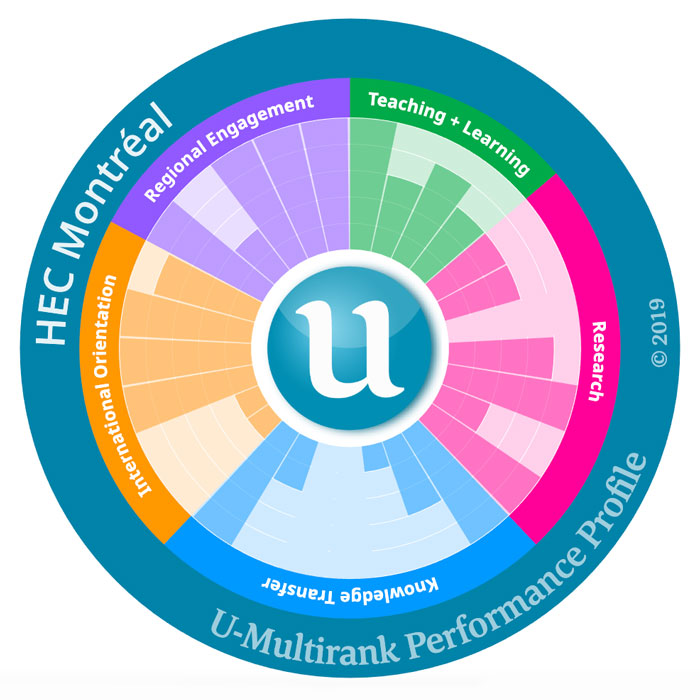HEC Montréal has once again fared very well in the U‑Multirank global ranking, which evaluated more than 1,700 universities this year, including 37 Canadian institutions.
The School earned very good performance indicators, including 13 “A” scores in the overall ranking. Universities were ranked according to a series of 29 criteria in 5 categories:

HEC Montréal’s overall performance, illustrated using the U-Multirank sunburst diagram.
Regional engagement
HEC Montréal received an “A” in this category for the proportion of bachelor’s and master’s graduates working in the region, its regional sources of funding, and the percentage of joint publications with regional partners and of regional publications with industrial partners.
Teaching and learning
The School was given an “A” for its bachelor graduation rate.
International orientation
The School earned the maximum score for its student mobility, the percentage of international academic staff and international doctorate degrees.
Research
HEC Montréal was lauded for the percentage of research publications in the top 10% most-frequently cited worldwide and the percentage of post-doc positions.
Knowledge transfer
The School was also awarded an “A” for the percentage of its income derived from continuous professional development and private sources.
Ranking by subject
The School also turned in a good performance in the ranking by subject (business studies), where it received seven excellent performance indicators in the same five categories:
- Regional engagement: joint publications with regional partners
- Teaching and learning: graduating on time (bachelors)
- International orientation: international doctorate degrees; international orientation of bachelor programs
- Research: total volume of publications listed in the Web of Science; external research income
- Knowledge transfer: co-publications with industrial partners
About U‑Multirank
U-Multirank is a ranking carried out by CHERPA, an independent consortium made up higher education and research organizations. Its objective is to measure the excellence of universities worldwide, using a variet of criteria. No overall scores are given; instead, users can create their own personalized rankings using the criteria they choose.
The ranking is based on data provided by the institutions themselves, databases and surveys of over 100,000 students from participating institutions. This is the sixth edition since the ranking was launched in 2014.







